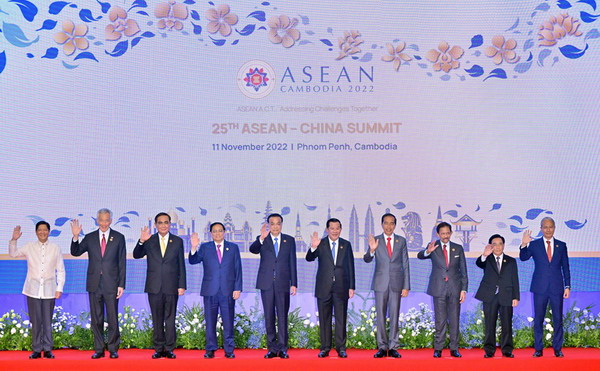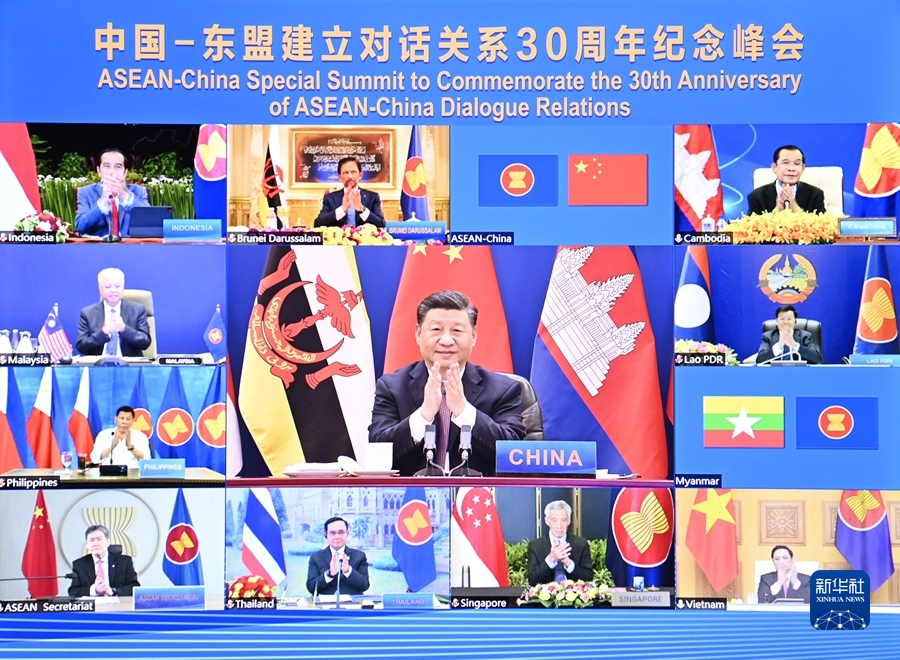|
On March 1, 2016, Indonesian English Newspaper The Jakarta Post published the article “Faith in China's Economic Prospects Matters” written by Dr. Xu Bu, Chinese Ambassador to ASEAN. The full text is as follows:

As the second largest economy in the world, China’s economic performance always draws a lot of attention from the outside world. China’s GDP increased by 6.9% in 2015, which was the first time in the last 25 years for China’s GDP growth rate hitting below 7%. Recently, due to the fluctuation of the stock markets and foreign exchange markets across the globe, views are often seen on the international media that “China’s economy is slowing down” or “China is leading the tumble of the world economy”, which is very worrying and disturbing. However, I believe these views are somewhat lopsided and pessimistic. The prospect of China’s economy and the economic relations between China and the world ought to be observed from an even broader perspective. The general situation of China’s economy, as described by Chinese Premier Li Keqiang, is that “there have been some ups and downs in the "shape" of the economy, but the underlying trend remains positive”.
The prospect of China’s economy will keep a sound and steady momentum.
The 6.9% of growth rate of GDP is a hard-won achievement of China given the weak global economy. At present, the world economy is undergoing profound changes. The world trade volume decreased while financial risks increased. As an economy closely linked to overseas markets, China cannot do well against the current back ground of the world economic situation. It is indeed remarkable to realize the growth rate of 6.9%. Moreover, this was the growth based on the volume of 10 trillion USD. In absolute terms, the amount of newly increased GDP of China was 648 billion USD, which equals the GDP volume of a rather big developing country. China still contributed 25% to global growth last year.
We have some grounds on for believing in sound prospect of China’s economy. With large area of territory and various industries, China’s economy has great potential and tenacity. The process of new industrialization, informatization, urbanization and agricultural modernization of China has entered a new phase, which will provide vast amount of domestic demand. China is accelerating the optimization of its economic structure; meanwhile the investment in infrastructure and consumption keeps steady momentum of growth. Services are booming in China. The year 2015 has seen a growth of 30% in online retail industry. The third industry takes 50.5% of total GDP and consumption contributes 66.4% to the growth of China’s economy, 15.4% higher than the previous year. The growth rate of high tech industry tops all other industries and the added value of high tech industry rose 10% over levels of a year ago. There is a big demand of consumption on information, cultural, health and tourism services. Energy-saving, environmental-friendly and green economies are in the ascendant. All of these help forming new point of growth.
At the same time, China’s structural reform is reaping more and more benefits. China is implementing supply-side structural reform, which allows the market to play the decisive role in allocation of resources. The five main tasks of China’s economy in 2016 are: cut excessive industrial capacity, lower corporate costs, real estate destocking, expand effective supply, prevent and defuse financial risks, with the main purpose of addressing the imbalance between supply and demand in China’s economy. Currently, China’s economy has experienced a temporary slowdown, which is mainly caused by slowdown of industrial growth. However, this is an inevitable phase of the newly introduced strategy of innovation-driven development and the optimization of industrial structure. Eventually, it will help realize a more sustainable and higher quality economic growth, and will also be beneficial to the world economy.
China remains a major driving force for global economic growth.
China has long been acting as the engine of the world economy. IMF data shows that over the past five years, China contributed 35% of global economic growth, and will continue to contribute 30% of global economic growth before the end of 2020. It has been proven that China is not a source of risks but a source of strength for world economic growth.
China is now upgrading its industrial and consumption structure, which will further stimulate the demand for international raw materials and commodities, boosting the exports of other countries in the world, and helping with the world’s economic recovery. With commodity prices dropping markedly, Although China's total imports and exports fell by 7% last year, it still hit $ 3.7 trillion and the actual amount of commodities China imported has continued to go up. In 2015, China's crude oil imports had increased by 8.8%, soybean imports by 14.4%. New demands for imports are also emerging when China continues to reform its economic structure, make more technological and industrial progress, expand and upgrade domestic consumption. China’s total imports of consumer goods last year reached about $ 1.68 trillion. China will adopt more proactive import policies and place greater emphasis on the quality of imports and exports. And China will only buy more from the world to meet its growing domestic demands.
China's export structure is being upgraded constantly, and will continue to meet the needs of the world market by providing more high-quality products and services. The total value added of the industrial enterprises above the designated size was up by 6.1 percent at comparable prices of the previous year. In 2015, the growth rate of China’s exports was higher than main economies across the world, taking up 13.4% of the global market share, rising from 12.4% in 2014. Equipment manufacturing industry became the bright spots of China's exports. China's railway equipment and electrical equipment were exported to more than 80 countries around the world, and have entered America, Europe and other high-end markets. China is not only enhancing the supply-side structural reform domestically, but also acting as an important part of world supply-side by meeting the world's needs with its upgrading export structure.
More and more overseas investment and tourists from China will help create more job opportunities to other countries and bring vitality to the world economy. Last year China’s ODI in non-financial sector reached a historical high of $127.6 billion, which is the 13th year that China recorded an ODI increase, with average annual growth of 33.6%. With the further enhancement of China’s industrialization, the speeding up of industrialization process of developing countries, and the reindustrialization of the developed countries, China’s economy will be more closely integrated with the world economy. More capital, technologies and equipment from China will enter the global market. At the same time, more Chinese tourists are traveling abroad. In 2015, the number of overseas tourist trips from China reached over 120 million, ranking first in the world for 3 years in row. During the last Chinese Lunar New Year period, there were over 6 million Chinese tourists traveling abroad, swiping around $14 billion of overseas consumption.
There is a bright future for China-ASEAN cooperation in trade, economy and production capacity.
China-ASEAN trade and economic relations have achieved fruitful results over the past year. Both sides reached consensus on an upgraded version of China-ASEAN FTA, and now are working in joint efforts to realize the target of scaling up two-way trade to $1 trillion by 2020. Since last year, major projects like Jakarta-Bandung High Speed Railway, China-Laos Railway, China-Thai Railway, had made new breakthroughs, and the connectivity and production capacity cooperation between China and ASEAN reached a new level. Not long ago, the Asian Infrastructure Investment Bank (AIIB) was officially launched, and all ASEAN countries are founding members of this bank. China will concentrate different resources to support infrastructure connectivity within ASEAN Community and between China and ASEAN.
To realize mutual benefit and to promote common development are the basic principles of China's foreign trade and economic cooperation. This year is the first year of the implementation of China’s 13th Five-Year Plan, the first year after the establishment of ASEAN Community, as well as the 25th anniversary of China -ASEAN dialogue relations. The China-ASEAN relation is now standing on a new historical starting point. Next, the two sides need continue to coordiate each other’s development strategies, combine Chinese strong financial and technical capacities with the accelerating ASEAN integration process, and push forward the China-ASEAN trade and economic relations to a new stage under the guidance of One Belt and One Road Initiative and the Post-2015 Version of ASEAN Community. To realize this goal, we have to stay confident both in the prospec of Chinese economy and the region’s economy.
Under the current world economic situation, confidence is more precious than gold.
|











